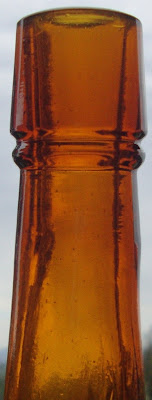ADJECTIVE
adjective: oriental · adjective: Oriental of, from, or
characteristic of East Asia : "oriental rugs"
NOUN
noun: oriental · plural noun: orientals · noun: Oriental · plural noun: Orientals a person of East Asian descent.
--------------------------------------
Heh! Not so fast~
--------------------------------------
Oriental / Tombstone
Opened 1880 by Milt
Joyce. Located at the corner of 5th and Allen Streets, it was called "the
most elegantly furnished saloon this side of the Golden
Gate ".
Wyatt Earp acquired
an interest in the gaming tables the same year. The Oriental became one of Tombstone
Above, Wyatt deals Faro while Doc. Holiday, to his left, "scouts";
-----------------------------------
Little known to most, a different Oriental saloon existed, twenty years later, and nearly a thousand miles away. Named under false pretexts, the Oriental Cafe and Grill did a short but thriving business.
-------------------------------------------
Oriental / San Francisco
Isaac (Ike) Tuchler,
a native of San Francisco
1900 S. F. City Directory listing.
He served the city well, and his "retirement" from law
enforcement after just five years of service, on May 1, 1900, didn't go
unnoticed. According to the newspaper article announcing his career change, he
was a highly commended officer. His retirement notice stated that he was going
to enter the saloon business at the corner of California
Not being one to
let moss grow under his feet, just five days later, on May 6, 1900, he along
with his partner A. A. Ranzulo, signed a contract with Weisman and Whittle for
the purposes of constructing a 3 story brick building on the aforementioned lot
at the corner of California and Drumm Streets, which they already owned.
Once completed,
sometime in either July or August of 1900, partners Ike Tuchler and Tony
"Abe" Ranzulo, (who had previously been with the Coronado Saloon),
moved into their new establishment named the "Merchants Inn".
The 1901 and 1902
S.F. business directories both list the Merchants Inn partnership at the California Street
The location was a natural since it was just a couple of blocks from
the Ferry building and just a stones throw away from Market Street San Francisco Ferry Building
 On December 15,
1901 a large advertisement appeared in the San Francisco Call, calling
attention to their enterprise. The Merchants Inn had a unique business model.
Advertise a large buffet of good food priced at next to nothing, and sell
liquor by the drink in the "box" (a large saloon partitioned off from
the "eatin' room") next to it. It was a way around saloon licensing
and the myriad of ever increasing restrictions that the commissioners were
forcing down the retail liquor trades throat in post turn of the century
On December 15,
1901 a large advertisement appeared in the San Francisco Call, calling
attention to their enterprise. The Merchants Inn had a unique business model.
Advertise a large buffet of good food priced at next to nothing, and sell
liquor by the drink in the "box" (a large saloon partitioned off from
the "eatin' room") next to it. It was a way around saloon licensing
and the myriad of ever increasing restrictions that the commissioners were
forcing down the retail liquor trades throat in post turn of the century
All apparently went
well... but for only about two years. For whatever reason, Ike and Abe split
the sheets in late 1903 and Ike pulled up stakes. He moved to a new location at
13 - 15 Powell St. California Drumm Street
Ike decided that
the old business model was worth carrying over. He established the Oriental
Cafe at the corner of Powell and Market, and immediately had a bottle mold cut
for his new enterprise.
The 1903 S. F. directory listed both the Merchants
Exchange and the Oriental; but under separate ownership.
A large buffet of good
food priced at next to nothing enticed hungry and thirsty alike at the new location.
And once again, sausages, salami, sardines, pickled herring, cheeses, salt
crackers and a myriad of other salty foods kept the clientele thirsty and the
drinks flowing.
All was not
sunshine and blossoms though. Shortly after the doors opened, Tuchler was
served notice by the City. The commissioners demanded that both the Oriental,
and the Hoffman (another established "lunch room"), shut down the "box"
portion of their enterprises.
Oddly enough the Merchants Inn was not named in
the legal maneuvering. Regardless, the die was cast and the writing was on the
wall for the Oriental. Shortly after it opened, Tuchler closed the doors for
good. He retained ownership of the business though, and sold it to a David
Hogan in 1904. Hogan tried to make a go of it for a couple more years. No
embossed bottles are known to exist for his enterprise and April 18, 1906 wiped
his slate clean for good.
Tuchler, apparently
tired of the saloon scene and politics, entered sales. The 1904 directory lists
him simply as a salesman.
The 1905 directory spells it out a little more
clearly; still a salesman, but as a salesman for none other than Hilbert
Mercantile.
No doubt, his major supplier during his tenure in the Cafe / Grill,
and saloon years. It's good to have friends in the right places.
To tie it up in a
neat little bundle; three of the rarest San
Francisco Co. "
in 1904, but got caught and sold the Hoffman Lunch to Sam Bernard in 1905. Of
the bunch, there's no doubt that the Oriental is the rarest bird in this cage.
To my knowledge, there's only a couple of examples documented to exist in
collections.
Both Arizona Territory
and the City by the Golden Gate had their
Orientals. Wyatt Earp may not have dealt faro in San Francisco
PS: The base of the Oriental is embossed 399H. No, Not Holt Glass Works!... This base mark definitively dates this Abramson / Heunisch Glass Co. mold number to a very small window in 1903.



















































